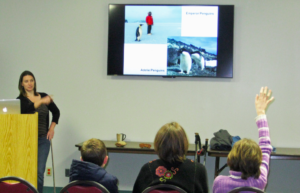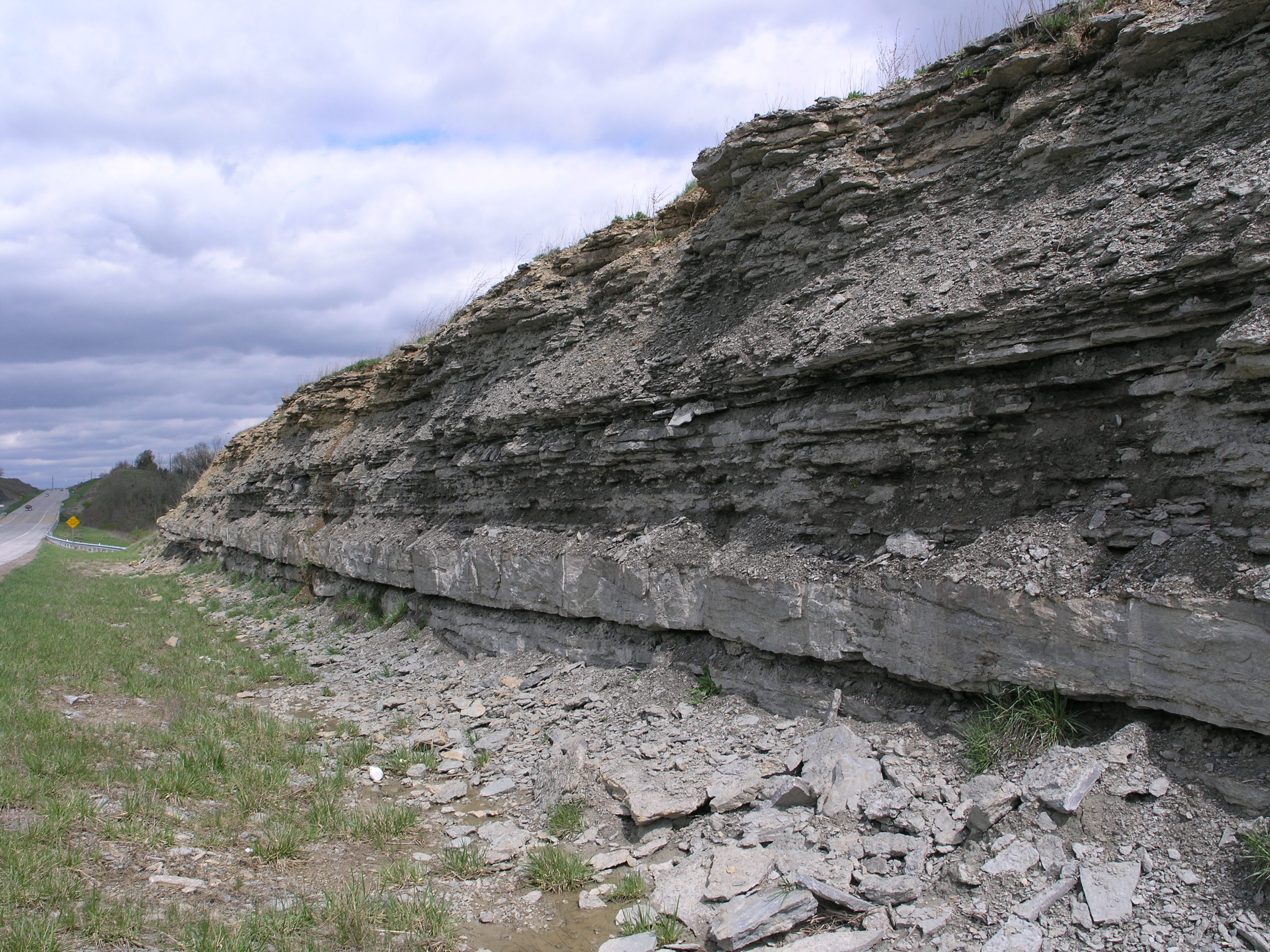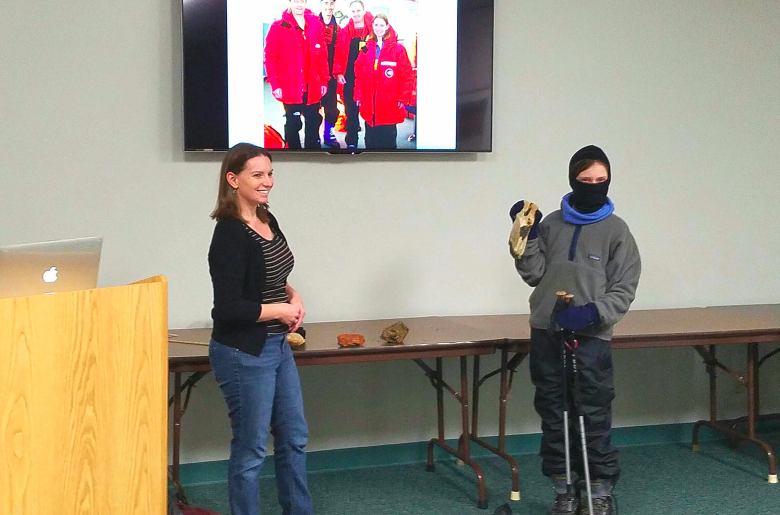Although it’s a bit cold during a (typical) Ohio winter to do a lot of field-based outreach, I try to keep busy with indoor outreach opportunities. This winter, I’ve been working with kindergarteners, grades 4-9 science teachers, and a nearby public library to communicate the importance of understanding Earth’s history. I usually forget to take photos (which makes a less interesting blog), but I thought two events this winter were worth mentioning on the lab blog anyway.
#1: Continuing our year-long SIPLAS program (see earlier post), I was able to lead a lesson plan on understanding climate change data, decoding fake scientific news stories, and accessing government climate data with our grades 4-9 teacher group. My colleague, Danielle Dani (the science education faculty member), did a great job leading off with a provocative question about whether the EPA should establish CO2 emissions targets which allowed the participants to immediately grasp the real-life link between themselves and climate science. Then we plotted sea ice and snow cover extent data from NOAA and used that to exams and debunk a fake news article.* It felt really great to be able to help this really super group of teachers develop stronger skills to cope with teaching a facts-based, strong science curriculum. Such tools are increasingly important given the dramatic anti-science rhetoric coming from the current administration, and it is imperative that professional scientists of all types develop closer ties to the public and increase our outreach during this difficult times for our nation. It is critical to the next generation understands the promise and importance of a scientific understanding for climate, medicine, and pollution to protect and preserve our quality of living and environment in both the short and long term.
*Thanks for Brad Deline for sharing an earlier version of this exercise. An example of scientists collaborating for the greater good!
#2: I gave a public program about my Antarctic research for The Plains Library (The Plains is next town north of Athens). Sure, I conducted that field work in November-December 2004, but stories of adventure and intense field conditions paired with really cool scientific results never really gets old. Seriously though, the combination of discovery, adventure, and hypothesis-grounded science really is a slam dunk for outreach. Most geologists have some great fields stories that can be worked into outreach is a really positive and effective way. In the case of my group, they were enthralled by the natural history of penguins (which had nothing to do with my primary research, but is a great way to discuss how climate change impacts species people care about), how to survive in subzero conditions (a really fantastic young woman even modeled my Antarctic gear as part of my explanation of our clothing), and the realities of camping on the ice (such as returning all recyclables and solid waste –even human–back to the US for disposal). I was also able to roll in plate tectonics, fossil preservation, and even a sidebar about local rocks of The Plains. Overall, it was a fun event, mostly because the audience was so interested and asked such great questions. Most of the pre-adult group were girls, who had awesome questions. Their parents had to drag them out of the library at the end of the evening. And that is awesome–girls so excited about science that they don’t want to stop talking about science.
It is imperative that professional scientists spend time sparking interest about what we do in young people. And it is critical that we have ALL types of scientists: women and men of all races, cultures, and identities interacting with the public. It is hard to imagine that you can be a scientist without ever seeing anyone like you in science. So we need ALL of us showing ALL of our society that together we can be stronger, we can improve our understanding of the world in which we live and we can innovate for a better tomorrow.


